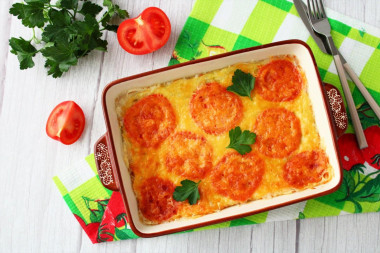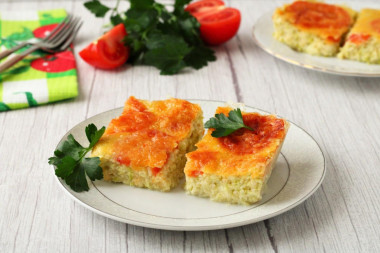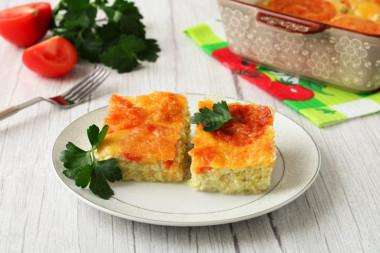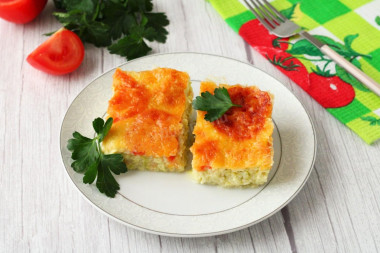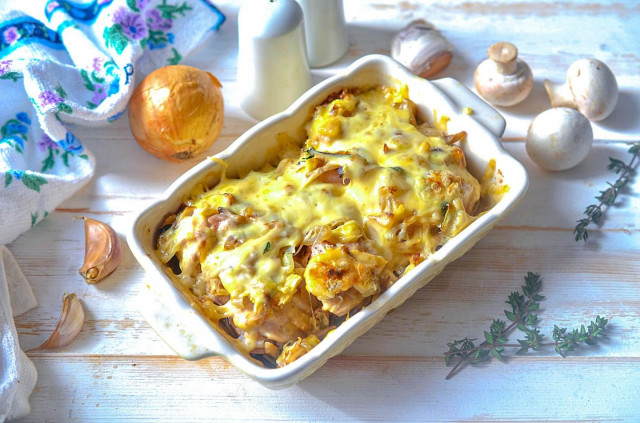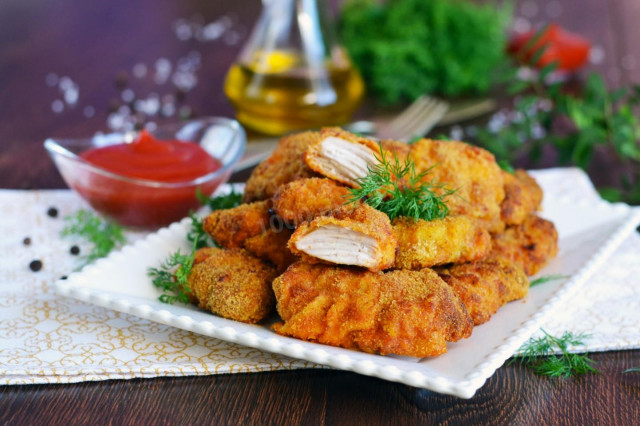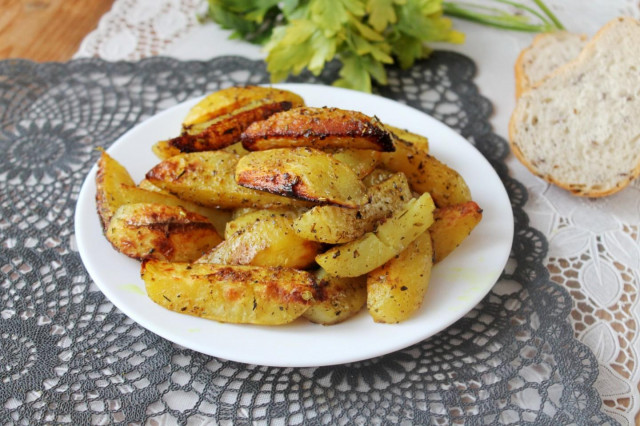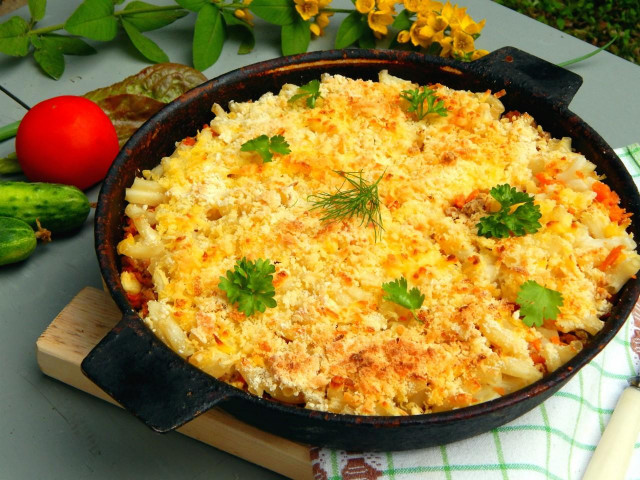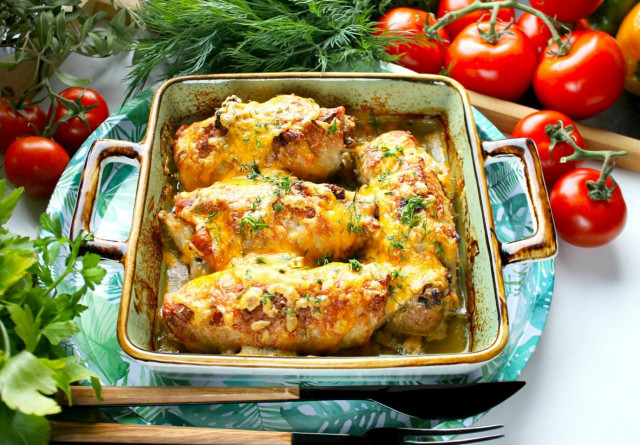Composition / ingredients
Step-by-step cooking
Step 1:
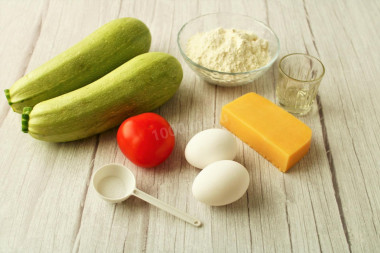
Prepare the necessary ingredients for making a casserole of zucchini and tomatoes with cheese in the oven. Cheese can be taken solid or melted. It is better to take an unripe tomato so that it is not too soft and watery.
Step 2:
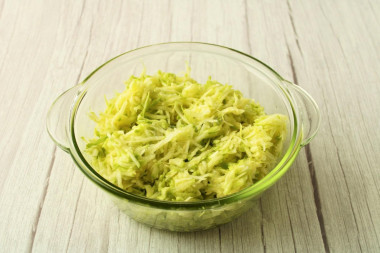
Wash the zucchini, dry it. If the zucchini skin is rough, peel it. In young fruits, the skin is tender, it can not be cut off. Grate the zucchini on a coarse grater.
Step 3:
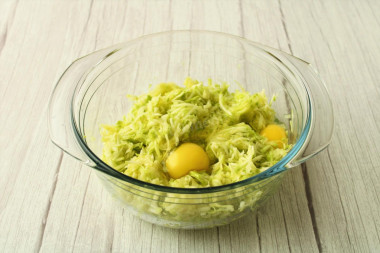
Squeeze the zucchini mass from the excess juice so that it is not too liquid. Add the eggs to the zucchini, mix well.
Step 4:
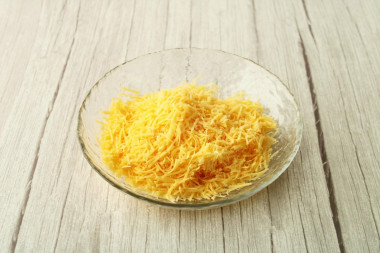
Chop the cheese on a medium grater. You can use any grater (large or small). In this case, it does not matter much, because when baking, the cheese will melt.
Step 5:
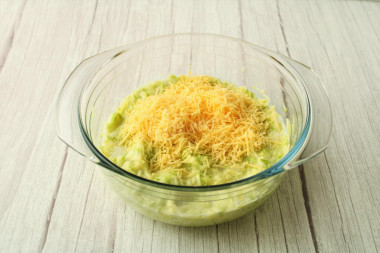
Add half of the grated cheese to the squash mass, add salt, mix. When adding salt, be sure to take into account the degree of salinity of the cheese, so that the finished dish does not turn out to be too salty.
Step 6:
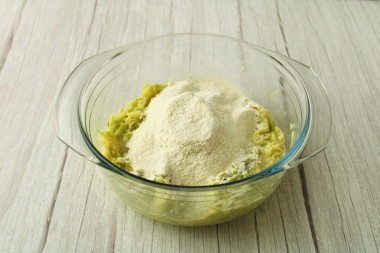
Sift flour into the resulting mass, mix well.
Step 7:
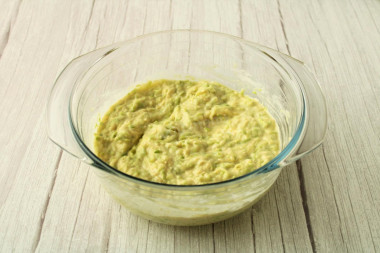
Should get a viscous, thickish mass. If necessary, adjust the amount of flour, achieving the desired consistency of the squash dough.
Step 8:
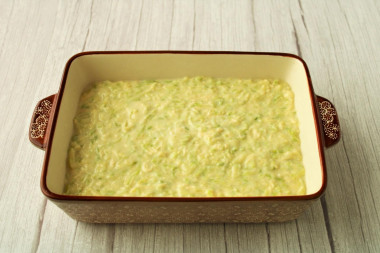
Grease the baking dish with vegetable or butter, lay out the zucchini mass, smooth it out.
Step 9:
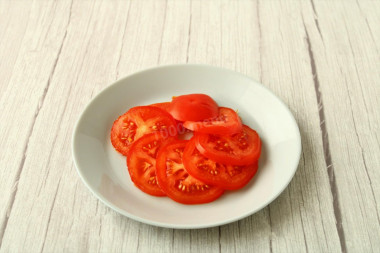
Wash the tomato, dry it. Cut the tomato into round slices. To make it easier to do, use a sharp knife.
Step 10:
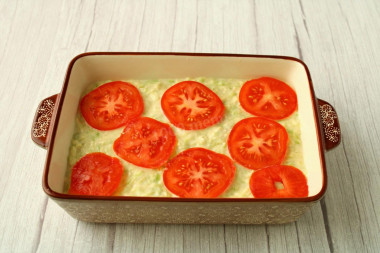
Put the tomato slices on top of the squash layer.
Step 11:
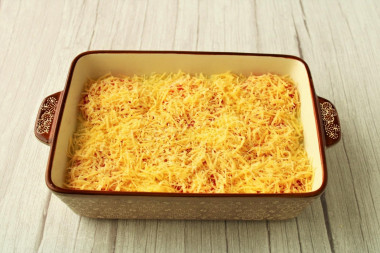
Sprinkle the casserole evenly with the remaining cheese on top.
Step 12:
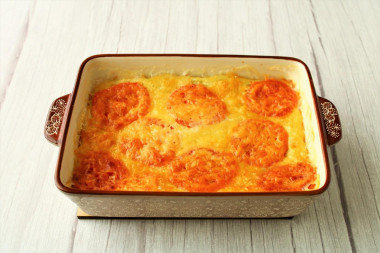
Put the mold in a preheated 180C oven for 30 minutes. Cook the casserole until a ruddy cheese crust forms. The cooking time may vary slightly, as it depends on the characteristics of each oven.
Step 13:
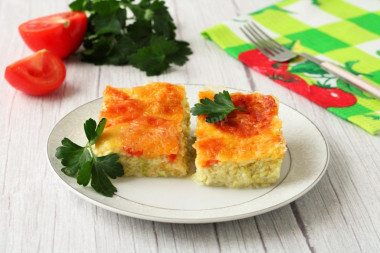
Let the finished casserole cool slightly, cut into pieces and serve. Bon appetit!
The casserole turned out to be very tender, with a pronounced creamy taste of cheese and a baked cheese crust.
The casserole is light, but at the same time nutritious thanks to the addition of cheese and flour. It can be served for breakfast or dinner.
It is better and easier to cut the casserole when it cools down a little and thickens.
---------------
Keep in mind that everyone's ovens are different. The temperature and cooking time may differ from those specified in the recipe. To make any baked dish turn out successfully, use useful information in the article about ovens here .
Be prepared for the fact that you may need more or less flour than indicated in the recipe. Focus not on the amount of flour, but on the desired consistency of the dough. To avoid mistakes, read about flour and its properties!
So that the oven has time to heat up to the desired temperature, turn it on in advance (10-20 minutes before cooking).
Caloric content of the products possible in the composition of the dish
- Tomatoes - 23 kcal/100g
- Chicken egg - 157 kcal/100g
- Egg white - 45 kcal/100g
- Egg powder - 542 kcal/100g
- Egg yolk - 352 kcal/100g
- Ostrich egg - 118 kcal/100g
- Zucchini - 23 kcal/100g
- Dutch cheese - 352 kcal/100g
- Swiss cheese - 335 kcal/100g
- Russian cheese - 366 kcal/100g
- Kostroma cheese - 345 kcal/100g
- Yaroslavsky cheese - 361 kcal/100g
- Altai cheese 50% fat content - 356 kcal/100g
- Soviet cheese - 400 kcal/100g
- Cheese "steppe" - 362 kcal/100g
- Uglich cheese - 347 kcal/100g
- Poshekhonsky cheese - 350 kcal/100g
- Lambert cheese - 377 kcal/100g
- Appnzeller cheese with 50% fat content - 400 kcal/100g
- Chester cheese with 50% fat content - 363 kcal/100g
- Edamer cheese with 40% fat content - 340 kcal/100g
- Cheese with mushrooms of 50% fat content - 395 kcal/100g
- Emmental cheese with 45% fat content - 420 kcal/100g
- Gouda cheese with 45% fat content - 356 kcal/100g
- Aiadeus cheese - 364 kcal/100g
- Dom blanc cheese (semi-hard) - 360 kcal/100g
- Lo spalmino cheese - 61 kcal/100g
- Cheese "etorki" (sheep, hard) - 401 kcal/100g
- White cheese - 100 kcal/100g
- Fat yellow cheese - 260 kcal/100g
- Altai cheese - 355 kcal/100g
- Kaunas cheese - 355 kcal/100g
- Latvian cheese - 316 kcal/100g
- Limburger cheese - 327 kcal/100g
- Lithuanian cheese - 250 kcal/100g
- Lake cheese - 350 kcal/100g
- Gruyere cheese - 396 kcal/100g
- Vegetable oil - 873 kcal/100g
- Salt - 0 kcal/100g
- Wheat flour - 325 kcal/100g


